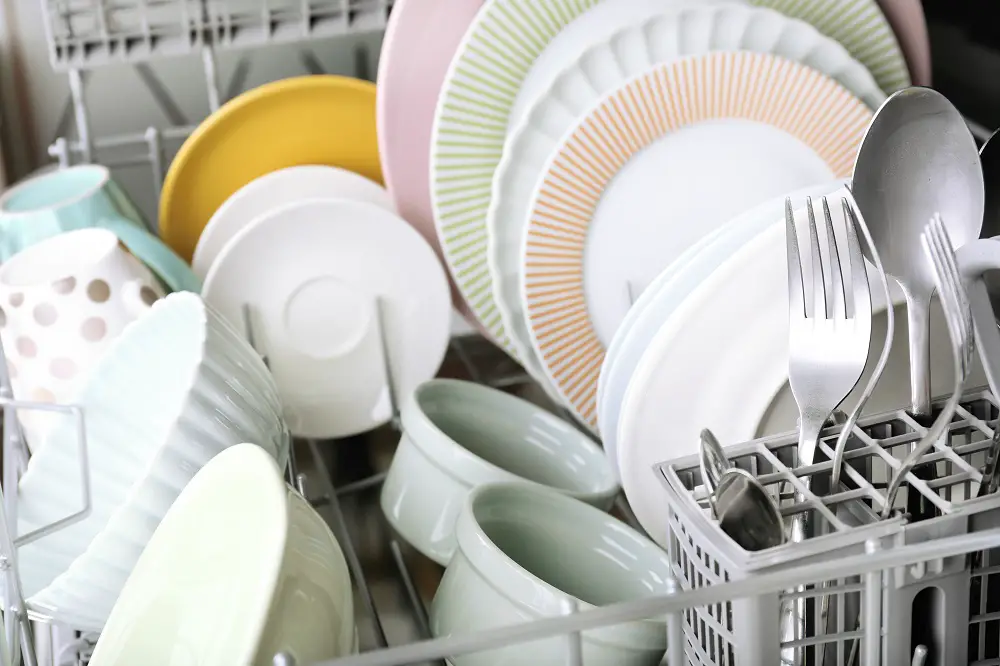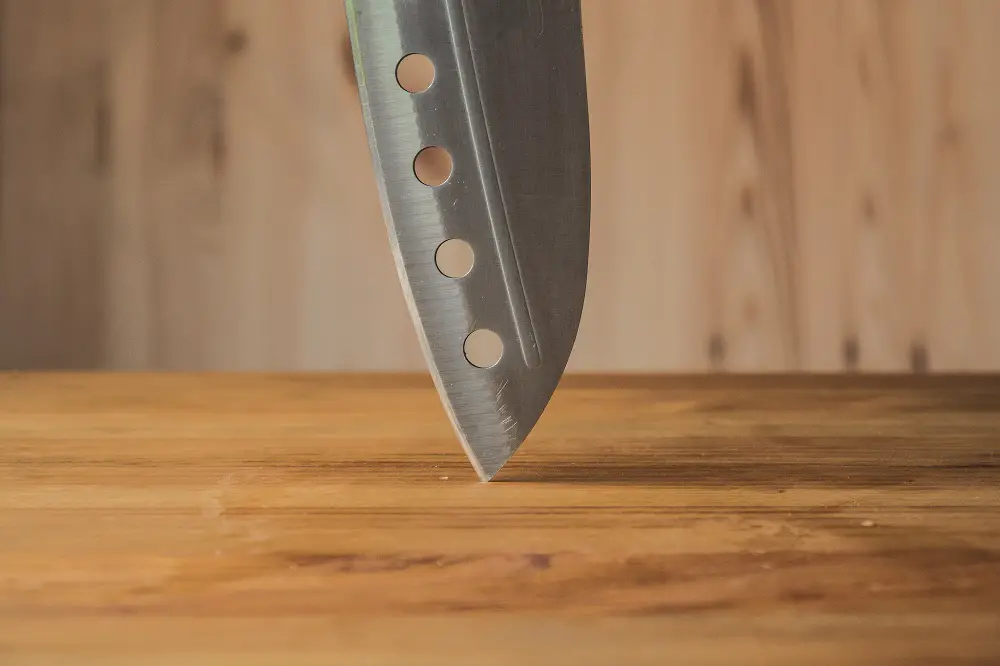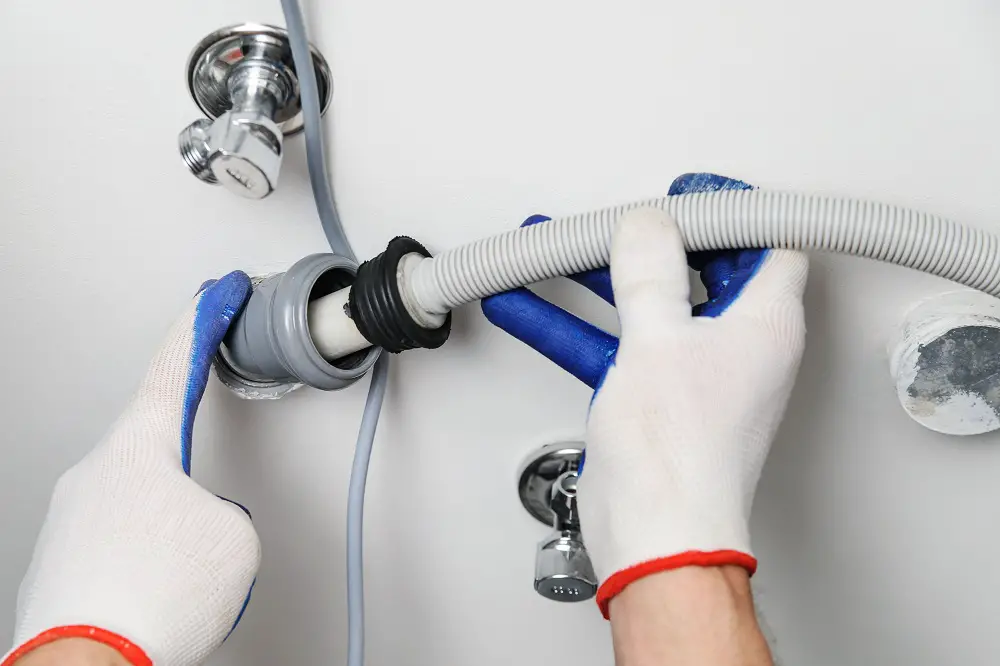A portable dishwasher is a handy appliance to help tackle your dirty dishes. But then, how often do you clean your dishwasher? Do you wait until the machine starts smelling or till your dishes don’t come out clean after a wash cycle?
Your portable dishwasher’s performance depends on its maintenance. Performing a deep clean every month is essential if you use it daily. It should include cleaning its exterior, interior, filter, and drain. It is completed by running a vinegar cycle.
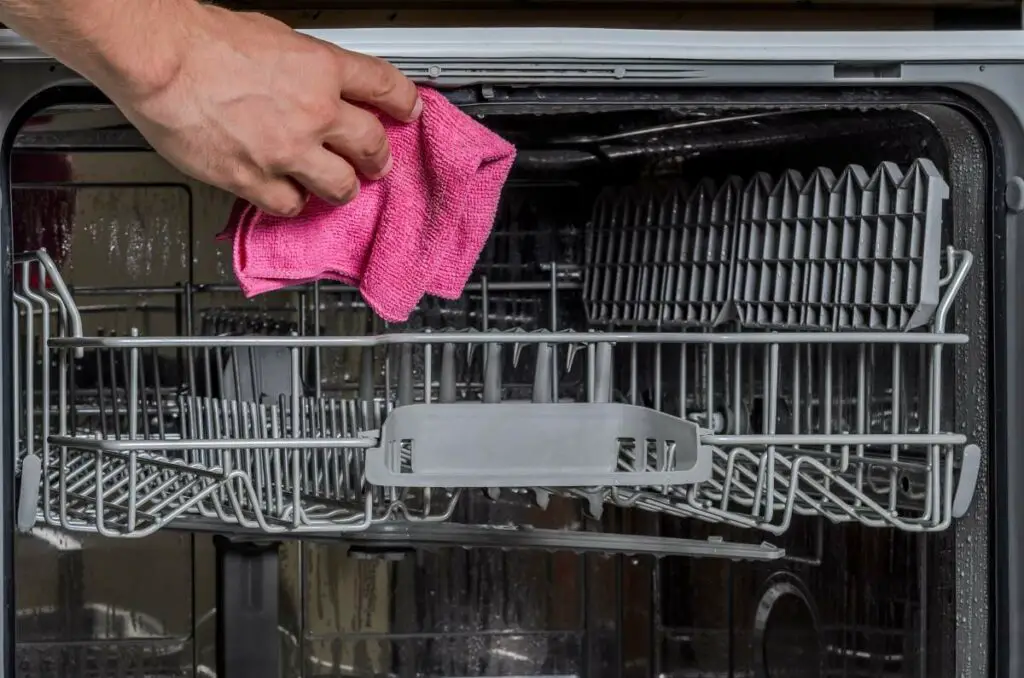
Read on to know the different steps to clean your portable dishwasher.
Table of Contents
How To Clean a Portable Dishwasher
All it takes are a few simple steps to clean your appliance to keep it in good shape and running efficiently.
You can also save a lot of money maintaining it properly in the long term, as this process will increase the device’s lifespan.
Check our article about the durability of portable dishwashers to get some actual numbers and tips for more longevity.
Supplies You’ll Need
Gather your supplies before you start cleaning:
- Soap
- Washcloth
- Sponge or old toothbrush
- Soft-bristled cleaning brush
- Distilled white vinegar
- Baking soda
- Rubber gloves
- Toothpick or flexible wire
Things to Remember Before You Get Started
Here are some important yet, often overlooked steps before cleaning your portable dishwasher:
- Disconnect your dishwasher from the electrical outlet.
- Ensure the casters or wheels are in the ‘locked’ position.
- Use rubber gloves to avoid cleanings agents and dirt on your hands.
- Remove any vessels from the racks.
Step 1: Cleaning the Interior
First, remove the racks of the dishwasher. Use warm soapy water and a soft-bristled brush to clean the racks. Rinse and keep them aside.
Next, clean the interior walls and door of the appliance with a brush and soapy water. Scrub any stubborn grime and soap scum accumulated on the dishwasher’s walls and door.
Use a toothbrush to clean the hard-to-reach spots inside the dishwasher.
Wipe the spray arms with a washcloth.
Clean out any food debris with a toothpick or flexible wire from the holes water sprays out of.
Wipe around the edges of the door thoroughly.
Finally, clean the door’s gasket by wiping it down with a washcloth and warm soapy water. This helps get rid of residues, grime, and mold. Consider using bleach to clean the gasket if it’s got considerable mold build-up.
Techjut tips:
- Get a mold-targeting dishwasher cleaner (rather than using soap, vinegar, and baking soda) for a moldy dishwasher. After the cycle, keep your dishwasher door open to let it air-dry. This prevents mold and mildew growth.
- Avoid using bleach for cleaning, especially if your dishwasher has stainless steel interiors.
- If you aren’t using your dishwasher for an extended period (like when you’re on vacation), place a bowl of baking soda inside the appliance.
- Keep your dishwasher door cracked open between uses; it prevents mold and mildew.
Step 2: Cleaning the Portable Dishwasher Filter
Your dishwasher’s filter captures the residual food particles from your dirty dishes. A clogged filter is also one of the most common reasons your dishes don’t come out clean or for dishwasher leaks and odors.
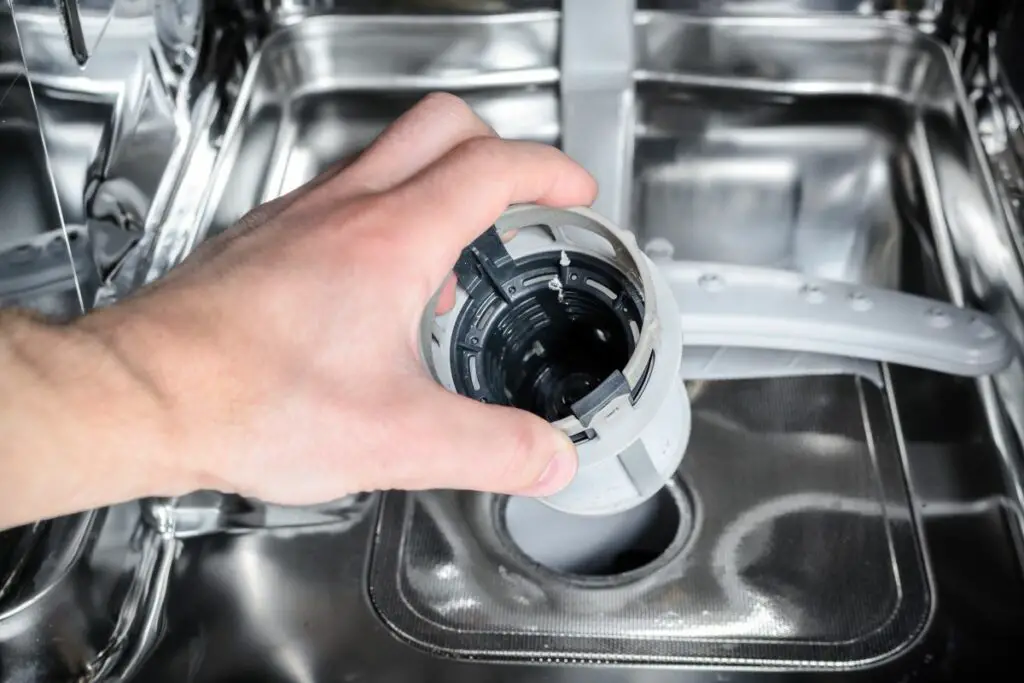
Remove the filter from the floor of the dishwasher tub and rinse it under running water. Alternatively, mix mild dishwashing soap in warm water and soak the filter for a few minutes.
Next, use a toothbrush or soft-bristled brush and gently scrub the inside of the filter to remove any stubborn residues.
Thoroughly rinse the filter with warm water and let it dry.
While the filter dries, clean the area of the filter housing (the floor of the dishwasher tub where the filter is placed). Clear away any food particles and finish cleaning with a damp cloth.
Replace the dishwasher filter.
Step 3: Cleaning the Dishwasher Drain Hose
The drain hose of the portable dishwasher expels the dirty water out of the appliance during the wash cycle.
For effective draining, you must ensure the drain hose is straight, without any kinks.
The hose may get clogged with debris; you must clean the drain hose using baking soda and vinegar. Use a hose-cleaning brush for a thorough scrub.
Here’s an article on How to Clean a Portable Dishwasher Drain for more detailed instructions.
Step 4: Cleaning the Exterior
Proper maintenance of your portable dishwasher also involves cleaning its exterior. For a stainless steel exterior, use a stainless steel cleaner and a clean washcloth; wipe dry with a lint-free cloth.
Use a damp washcloth with a drop of detergent for plastic surfaces to wipe clean. Follow this with a damp cloth wipe and use another dry cloth to wipe dry.
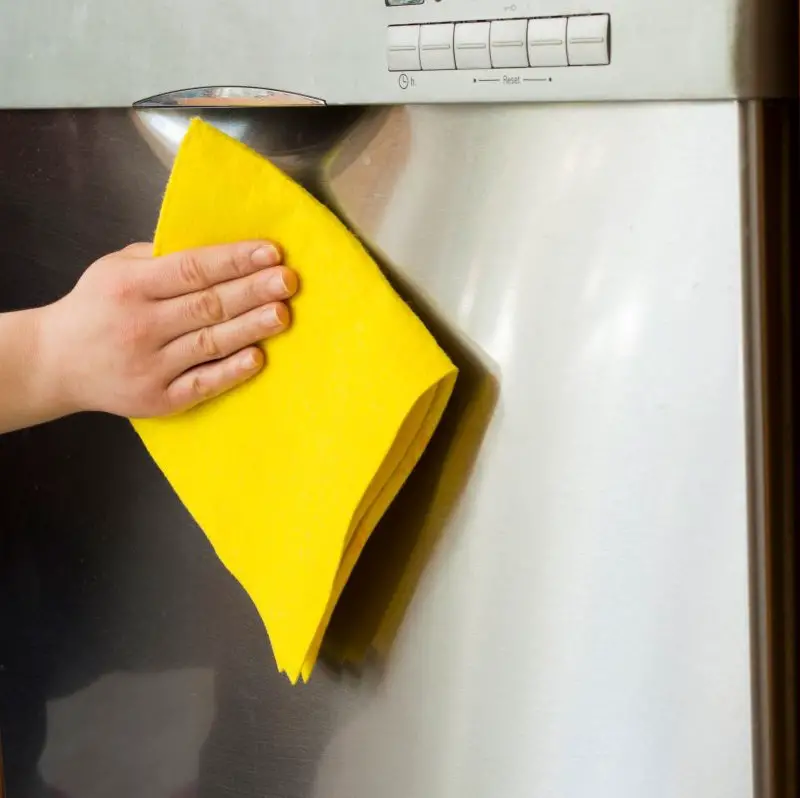
Remember to clean around any buttons or dials on the top or front of the door. You can use an old toothbrush and dish soap to remove buildup.
Techjut tip:
Older models may have sensitive printings. Make sure they can resist the chemicals and cleaning procedures.
Step 5: Running a Cycle With Vinegar
Vinegar helps get rid of any stains in your dishwasher. It helps break down residual debris, soap scum, grease, residue, or other leftover grime.
Take about a cup of distilled white vinegar in a dishwasher-safe bowl. Place the bowl on the top rack of the empty dishwasher. Run a hot water cycle.
Techjut tips:
- You don’t need to use dishwashing detergent for a vinegar rinse. The vinegar mixes with the water for good cleaning results.
- Skip the drying cycle for a vinegar rinse; it helps save energy costs.
Step 6: Rinsing With Baking Soda
The vinegar rinse helps remove stains and sanitizes your dishwasher. Following the completion of the vinegar rinse, sprinkle a cup of baking soda on the dishwasher drum’s floor.
Run a short hot water rinse. After the cycle, keep the dishwasher door open to air-dry the interior.
Alternatively, you can sprinkle baking soda on the floor of the dishwasher drum and leave it overnight. Then, run an empty cycle the following day. This helps rid your dishwasher of bacteria, germs, and any odors.
Techjut tips:
- Avoid mixing vinegar and baking soda in the same wash cycle. This mixture will cause excessive foaming and create a mess you’ll have to clean up later.
- You can skip the vinegar-baking soda rinse cycles and run a deep clean cycle using a dishwasher cleaner. Choose one with antibacterial ingredients.
Conclusion
Cleaning your portable dishwasher regularly is essential to have it running and washing your dishes effectively. Try to stick to a regular cleaning schedule. Once every month or once in 2-3 months would be best, depending on your use frequency.
However, if you notice your dishes aren’t clean at the end of a wash cycle or your dishwasher smells bad, do a cleaning right away.
The steps to clean a portable dishwasher start with cleaning its interior, filter, drain hose, and exterior. Then you must run two cycles – one with distilled white vinegar and another with baking soda.
Once you’re done cleaning, you’ll have a spotless dishwasher that also smells clean.
